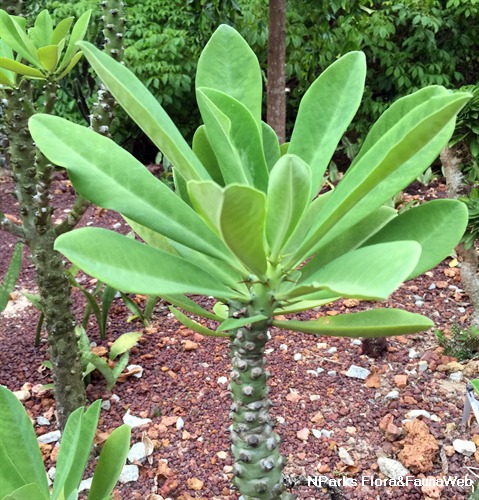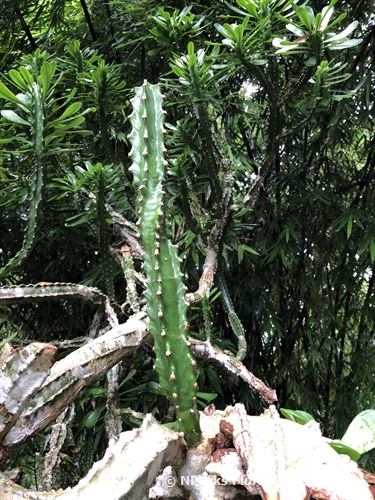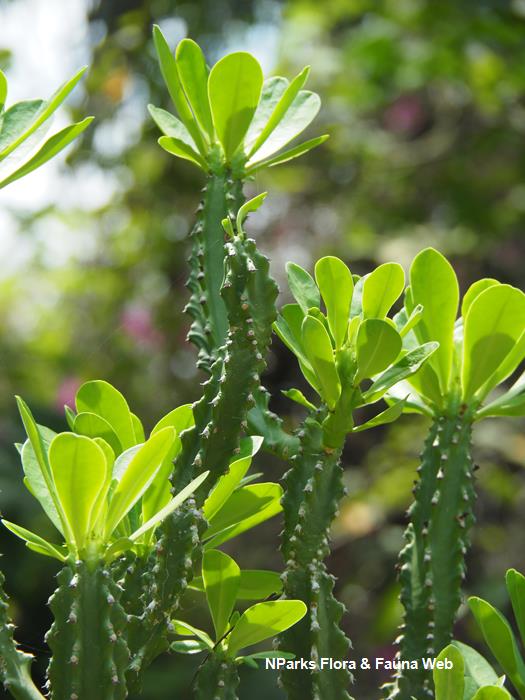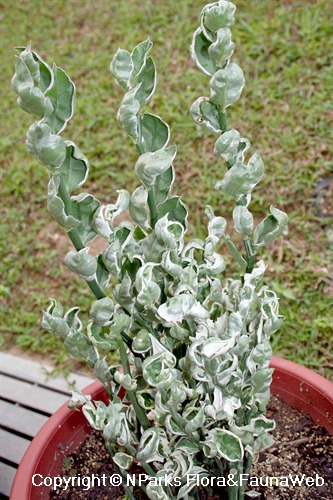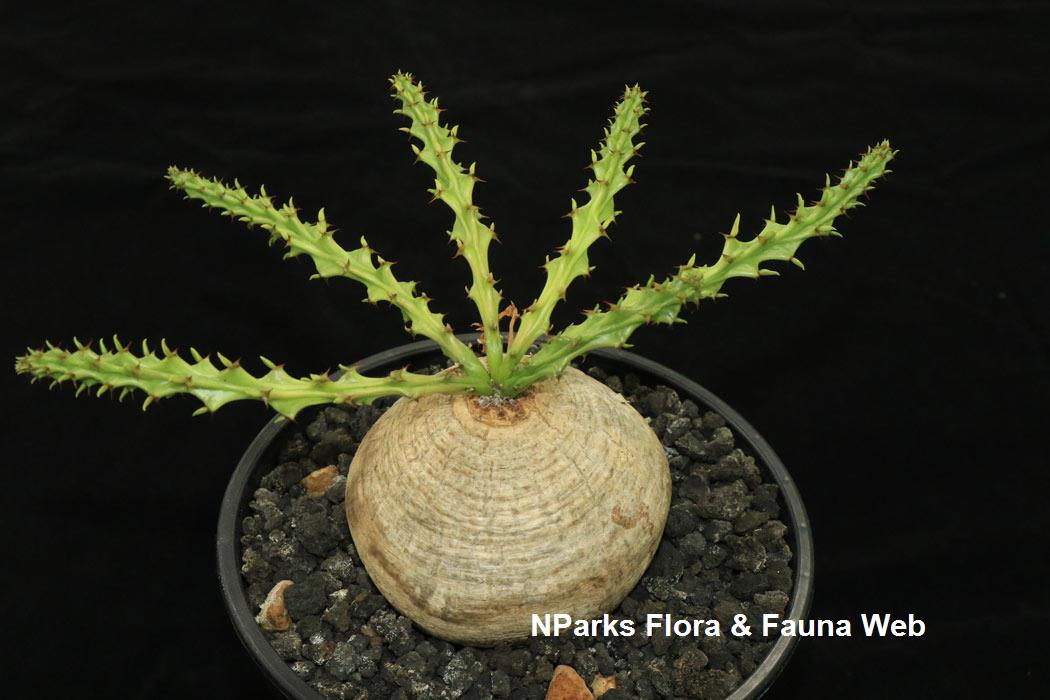
Back
Euphorbia neriifolia
| Family Name: | Euphorbiaceae |
| Synonyms: | Elaeophorbia neriifolia, Euphorbia edulis, Euphorbia pentagona, Euphorbia ligularia |
| Common Name: | Indian Spurge Tree, Hedge Euphorbia, Sudu, Sudu Sudu, Sesudu, 金刚纂 |
Name
Classifications and Characteristics
| Plant Division | Angiosperms (Flowering Seed Plants) (Dicotyledon) |
|---|---|
| Plant Growth Form | Shrub |
| Lifespan (in Singapore) | Perennial |
| Mode of Nutrition | Autotrophic |
| Plant Shape | Shrubby |
| Maximum Height | 3 m to 5 m |
Biogeography
| Native Distribution | Iran to Southern China |
|---|---|
| Native Habitat | Terrestrial |
| Preferred Climate Zone | Sub-Tropical / Monsoonal |
| Local Conservation Status | Non-native (Horticultural / Cultivated Only) |
Description and Ethnobotany
| Growth Form | Erect, succulent shrub up to 4 m tall. |
|---|---|
| Foliage | Fleshy, glossy leaves (15 cm long, 6 cm wide) are narrowly obovate (approximately egg-shaped with the narrow end attached to the leaf stalk). |
| Stems | Young stems have 5 spiral ridges lined with spines or leaf scars. Short spines occur in pairs. |
| Fruit | Dry, dehiscent fruits are known as capsules. Round seeds have a short beak at the apex and a furrow along the middle dividing the fruit into 2 equal halves. |
| Etymology | The specific epithet 'neriifolia' means that the leaves are like those of Nerium spp., such as Oleander. |
Landscaping Features
| Desirable Plant Features | Ornamental Stems |
|---|---|
| Landscape Uses | Suitable for Rooftops, Container Planting |
| Thematic Landscaping | Rockery / Desert Garden, Naturalistic Garden |
| Usage Hazard - Cons | Spines/Thorns - Stem/Branch, Irritant - Sap |
Plant Care and Propagation
| Light Preference | Semi-Shade, Full Sun |
|---|---|
| Water Preference | Little Water |
| Plant Growth Rate | Moderate |
| Rootzone Tolerance | Saline Soils / Salt Spray, Drought Tolerant, Shallow Media |
Foliar
| Foliage Retention | Drought / Semi-Deciduous |
|---|---|
| Mature Foliage Colour(s) | Green |
| Mature Foliage Texture(s) | Smooth |
| Foliar Modification | Spine (axillary) |
| Foliar Type | Simple / Unifoliate |
| Foliar Arrangement Along Stem | Alternate |
| Foliar Attachment to Stem | Petiolate |
| Foliar Shape(s) | Non-Palm Foliage (Elliptical) |
| Foliar Venation | Pinnate / Net |
| Foliar Margin | Entire |
| Foliar Apex - Tip | Acute |
| Foliar Base | Acute |
| Leaf Area Index (LAI) for Green Plot Ratio | 4.5 (Shrub & Groundcover - Dicot) |
Non - Foliar and Storage
| Root Type | Underground (Fibrous Root) |
|---|---|
| Specialised Storage Organ(s) | Aboveground |
Floral (Angiosperm)
| Flower & Plant Sexuality | Unisexual Flowers , Monoecious |
| Flower Grouping | Cluster / Inflorescence |
|---|
| Inflorescence Type | Cyathium |
Fruit, Seed and Spore
| Fruit Classification | Simple Fruit |
|---|---|
| Fruit Type | Dehiscent Dry Fruit , Capsule |
Image Repository
Others
| Master ID | 711 |
|---|---|
| Species ID | 2006 |
| Flora Disclaimer | The information in this website has been compiled from reliable sources, such as reference works on medicinal plants. It is not a substitute for medical advice or treatment and NParks does not purport to provide any medical advice. Readers should always consult his/her physician before using or consuming a plant for medicinal purposes. |

